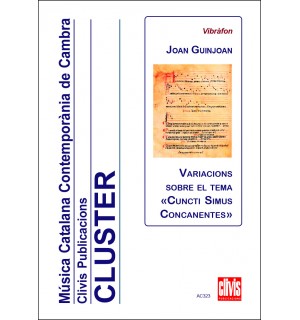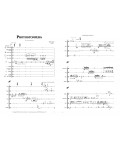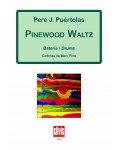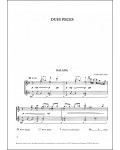
No products
Prices are tax included
Product successfully added to your shopping cart
There are 0 items in your cart. There is 1 item in your cart.
- English
- Castellano
- Català
Variacions sobre el tema "Cuncti Simus Concanentes"
DAC323
The work Variations on the Theme "Cuncti Simus Concanentes" from the Llibre Vermell de Montserrat explores the theme through a series of matrices based on this theme, starting with a light movement that progressively moves on to different structural passages, gradually increasing in speed and culminating in a tremolo in the final chord.
| Period | XXth Century |
| Instruments | Vibraphone |
| Pages | 11 |
| Time | 9 min. |
| Contents | Score |
| ISMN | 979-0-3502-0769-3 |
| Price of print edition | 15€ |
| Edition | Digital |
Nobody could dispute the fact that the work of Joan Guinjoan is an essential point of reference in Catalan music from the second half of the 20th century through to the present day. Anyone who is familiar with Guinjoan knows that an encounter with the maestro is always surprising as well as extremely stimulating. Composers of every style visit his house every day to show him their works and get his views. His charisma and receptiveness are very special, and this is evident in his music which features exceptional freshness and colour.
The Variations on the Theme "Cuncti Simus Concanentes" from the Llibre Vermell de Montserrat (Red Book of Montserrat) were originally written in 1996 for the zither, the instrument with which it was premiered in Munich that same year with Marianne Kirch as soloist. The version for the vibraphone was written by the author himself and premiered by Pilar Subirà at the VIII Catalan Exhibition of Contemporary Music in 1996, in Barcelona.
The work, dedicated to Marianne Kirch, explores the abovementioned theme through a series of matrices based on this theme, starting with a light movement that progressively moves on to different structural passages, gradually increasing in speed and culminating in a tremolo in the final chord.
Agustí Charles









